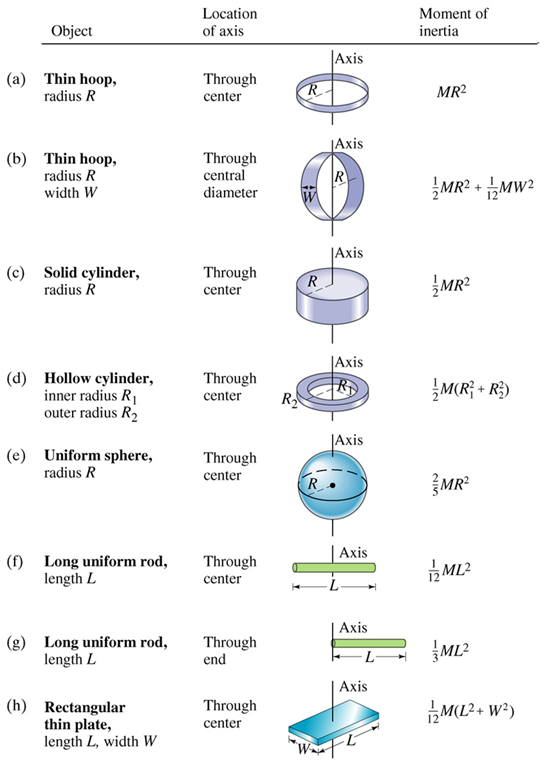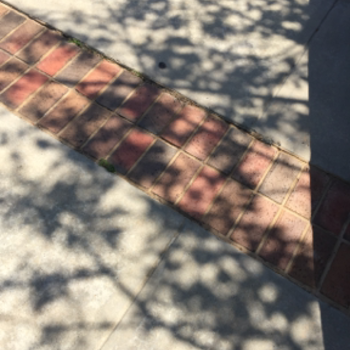Question #f7941
1 Answer
Sum up the moment of inertia of all its components.
Explanation:
Bicycle wheel is not uniform object, you will have to consider the moment of inertia of the wheel component by component.
Let
 )
)
The diagram above shows that a wheel has a tire, a rim, many (n) spokes and spoke nipples, and valve (not shown) as components. If there are other features on your wheel that are shown in the diagram, add them to the list.
Next, look up a moment of inertia chart to identify the formula for each of the component found. See the chart below.
You will notice that tire may use the formula
For the rim,
For each spoke,
Because there are n of them, the total
For the hub,
For the valve,
For n spoke nipples, so the total
The total momentum is a matter of summing up all the calculations of I's above. However, before you can calculate them, you must measure the M, R or L of each component first.
![http://www.chegg.com/homework-help/moment-inertial-rotating-solid-disk-axis-center-mass-mr2-fig-chapter-8-problem-17q-solution-9780131846616-exc]
( )
)
To do so, you need to take the wheel apart and extract its components and measure their masses. After the mass measurement, perform dimension measurement:
For the hub, rim and tire, measure their diameters or circumferences and then convert them into their correspondent radii.
For spokes, just measure the length (L) of one of them and count the total number of them.
For a spoke nipple, measure its distance (R) from the center of the axis of the wheel.
For the valve, measure its distance (R) from the center of the axis.
For anything not on this list, measure its mass, length or radius and identify its moment of inertia formula on the look-up table.
Note: You will soon realize that you may not be able to find a formula on the look-up table that matches exactly the actual shape of a component. In this case, you may want to use an approximation to get results.
For instance
Or think of it composed of a solid piece and inside it a hollowed piece; then calculate


